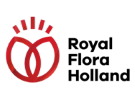From December 31, 2021, a traceability code on the plant passport is required for potted plants of Citrus, Coffea, Lavandula dentata, Nerium oleander, Olea europea, Polygala myrtifolia and Prunus dulcis. For these plants, you must provide plant passports with the traceability code after the letter C from the new year.
Traceability code on plant passport
One of the components of the plant passport is the traceability code (after the letter C). This is a code that enables tracing within your own company administration. Think of a unique lot number, parcel number, greenhouse number, or the number stated on the supplier's document. Since December 2019, a plant passport obligation applies to all plants, including potted plants that we consider to be an end product. European legislation prescribes what the plant passport should look like.

Do you have questions about the traceability code?
If nothing else changes in the layout, you do not need to re-authorize the plant passport.
Note: It also remains the case that if there is a PZ plant passport (for example bacterial fire host plants), the traceability code must be entered.
For more information: Royal FloraHolland
Royal FloraHolland
www.royalfloraholland.com
